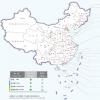长篇阅读:First-Generation College-Goers: Unprepared an
长篇阅读:First-Generation College-Goers: Unprepared and Behind Kids who are the first in their families to brave the world of higher
First-Generation College-Goers: Unprepared and Behind
Kids who are the first in their families to brave the world of higher
education come on campus with little academic know-how and are much more likely
than their peers to drop out before graduation.
A) When Nijay Williams entered college last fall as a fires-generation
student and Jamaican immigrant, he was academically unprepared for the rigors of
higher education. Like many first-generation student, he enrolled in a
medium-sized state university many of his high school peers were also attending,
received a Pell Grant, and board and the closeness of the school to his family,
he chose to live at home and worded between 30 and 40 hours a week while taking
a full class schedule.
B) What Nijay didn't realize about his school—Tennessee State University—was
its frighteningly low graduation rate: a mere 29 percent for its
first-generation students. At the end of his first year, Nijay lost his Pell
Grant of over $5,000 after narrowly missing the 2.0 GPA cut-off, making it
impossible for him to continue paying for school.
C) Nijay represents a large and growing group of Americans: first-generation
college students who enter school unprepared or behind. To make matters worse,
these schools are ill-equipped to graduate these students—young adults who face
specific challenges and obstacles. They typically carry financial burdens that
outweigh those of their peers, are more likely to work while attending school,
and often require significant academic remediation(补习).
D) Matt Rubinoff directs I'm First, a nonprofit organization launched last
October to reach out to this specific population of students. He hopes to
distribute this information and help prospective college-goers find the best
post-secondary fit. And while Rubinoff believes there are a good number of
four-year schools that truly care about these students and set aside significant
resources and programs for them, he says that number isn't high enough.
E) "It's not only the selective and elite institutions that provide those
opportunities for a small subset of this population," Rubinoff said, adding that
a majority of first-generation under graduates tend toward options such as
online programs, two-year colleges, and commuter stand schools. "Unfortunately,
there tends to be a lack of information and support to help students think
bigger and broader."
F) Despite this problem, many students are still drawn to these
institutions—and two-year schools in particular. As a former high school
teacher, I saw students choose familiar, cheaper options year after year.
Instead of skipping out on higher education altogether, they chose community
colleges or state schools with low bars for admittance.
G) "They underestimate themselves when selecting a university," said Dave
Jarrat, a marketing executive for Inside Track, a for-profit organization that
specializes in coaching low-income students and supporting colleges in order to
help students thrive. "The reality of it is that a lot of low-income kids could
be going to elite universities on a full ride scholarship and don't even realize
it."
H) "Many students are coming from a situation where no one around them has
the experience of successfully completing higher education, so they are coming
in questioning themselves and their college worthiness," Jarrat continued. That
helps explain why, as I'm First's Rubinoff indicated, the schools to which these
students end up resorting can end up being some of the poorest matches for them.
The University of Tennessee and Tennessee State are worth comparing. Tennessee
State's overall graduation rate is a tiny 39 percent, but at least it has a
smaller gap between the outcomes for first-generation students and those of
their peers.
I) Still, the University of Tennessee deserves credit for being transparent.
Many large institutions keep this kind of data secret—or at least make it
incredibly difficult to find. The University of North Carolina at Chapel Hill,
for instance, admits only that the graduation rate for its first-generation
pupils is "much lower" than the percentage of all students who graduate within
four years (81 percent).
J) It is actually quite difficult to find reliable statisties on the issue
for many schools. Higher education institutions are, under federal law, required
to report graduation rates, but these reports typically only include Pell
recipient numbers—not necessarily rates specific to first-generation students.
Other initiatives fail to break down the data, too. Imagine how intimidating it
can be for prospective students unfamiliar with the complexities of higher
education to navigate this kind of information and then identify which schools
are the best fit.
K) It was this lack of information that prompted the launch of I'm First in
2013, originally as an arm of its umbrella organization, the Center For Student
Opportunity. "If we can help to direct students to more of these types of
campuses and help students to understand them to be realistic and accessible
places, have them apply to these schools at greater frequency and ultimately get
in and enroll, we are going to raise the success rate,"Rubinoff said, citing a
variety of colleges ranging from large state institutions to smaller private
schools.
L) Chelsea Jones, who now directs student programming at I'm First, was a
first-generation college student at Howard. Like other student new to the
intimidating higher-education world, she often struggled on her path to college.
"There wasn't really a college-bound culture at my high school," she said. "I
want to go to college but I didn't really know the process." Jones became
involved with a college-access program through Princeton University in high
school. Now she attributes much of her understanding of college to that:" But
once I got to campus, it was a completely different ball game that no one really
prepared me for."
M) She was fortunate, though. Howard, a well-regarded historically black
college, had an array of resources for its first-generation students, including
matching kids with counselors, connecting first-generation students to one
another, and TRIO, a national program that supported 200 students on Howard's
campus. Still, Jones represents a small percentage of first-generation students
who are able to gain entry into more elite universities, which are often known
for robust financial aid packages and remarkably high graduation rates for
first-generation students. (Harvard, for example, boasts a six-year graduation
rate for underrepresented minority groups of 98 percent.)
N) Christian Vazquez, a first-generation Tale graduate, is another exception,
his success story setting him far apart from students such as Nijay. "There is a
lot of support at Yale, to an extent, after a while, there is too much support."
he said, half-joking about the countless resources available at the school.
Students are placed in small groups with counselors (trained seniors on campus);
they have access to cultural and ethnic affinity(联系)groups, tutoring centers and
also have a summer orientation specifically for first-generation students (the
latter being one of the most common programs for students).
O) "Our support structure was more like:' You are going to get through Yale;
you are going to do well.'" he said, hinting at mentors(导师),staff, and
professors who all provided significant support for students who lacked
confidence about "belonging" at such a top institution.
46.Many first-generation college-goers have doubts about their abilities to
get a college degree.
A.A
B.B
C.C
D.D
E.E
F.F
G.G
H.H
I.I
J.J
K.K
L.L
M.M
N.N
O.O
47.First-generation college students tend to have much heavier financial
burdens than their peers.
A.A
B.B
C.C
D.D
E.E
F.F
G.G
H.H
I.I
J.J
K.K
L.L
M.M
N.N
O.O
48.The graduation rate of first-generation students at Nijay's university was
incredibly low.
A.A
B.B
C.C
D.D
E.E
F.F
G.G
H.H
I.I
J.J
K.K
L.L
M.M
N.N
O.O
【答案】B
解析:B段第一句What Nijay didn't realize about his school—Tennessee State
University—was its frighteningly low graduation rate.
49.Some top institutions like Yale seem to provide first-generation students
with more support than they actually need.
A.A
B.B
C.C
D.D
E.E
F.F
G.G
H.H
I.I
J.J
K.K
L.L
M.M
N.N
O.O
50.On entering college, Nijay Williams had no idea how challenging college
education was.
A.A
B.B
C.C
D.D
E.E
F.F
G.G
H.H
I.I
J.J
K.K
L.L
M.M
N.N
O.O
51.Many universities simply refuse to release their exact graduation rates
for first-generation students.
A.A
B.B
C.C
D.D
E.E
F.F
G.G
H.H
I.I
J.J
K.K
L.L
M.M
N.N
O.O
52.According to a marketing executive, many students from low-income families
dot's know they could have a chance of going to an elite university.
A.A
B.B
C.C
D.D
E.E
F.F
G.G
H.H
I.I
J.J
K.K
L.L
M.M
N.N
O.O
53.Some elite university attach great importance to building up the
first-generation students' self-confidence.
A.A
B.B
C.C
D.D
E.E
F.F
G.G
H.H
I.I
J.J
K.K
L.L
M.M
N.N
O.O
54.I'm First distributes information to help first-generation college-goers
find schools that are most suitable for them.
A.A
B.B
C.C
D.D
E.E
F.F
G.G
H.H
I.I
J.J
K.K
L.L
M.M
N.N
O.O
55.Elite universities tend to graduate first-generation students at a higher
rate.
A.A
B.B
C.C
D.D
E.E
F.F
G.G
H.H
I.I
J.J
K.K
L.L
M.M
N.N
O.O
参考解答
46.【答案】H
解析:H段第一句"Many students are coming from a situation where no one around them has the experience of successfully completing higher education, so they are coming in questioning themselves and their college worthiness,"
47.【答案】C
解析:C段最后一句话They typically carry financial burdens that outweigh those of their peers, are more likely to work while attending school, and often require significant academic remediation(补习).
48.【答案】B
解析:B段第一句What Nijay didn't realize about his school—Tennessee State University—was its frighteningly low graduation rate.
49.【答案】N
解析:"There is a lot of support at Yale, to an extent, after a while, there is too much support." he said, half-joking about the countless resources available at the school.
50.【答案】A
解析:A段第一句When Nijay Williams entered college last fall as a fires-generation student and Jamaican immigrant, he was academically unprepared for the rigors of higher education.
51.【答案】J
解析:J段第一句It is actually quite difficult to find reliable statistics on the issue for many schools.
52.【答案】G
解析:G段最后一句"The reality of it is that a lot of low-income kids could be going to elite universities on a full ride scholarship and don't even realize it."
53.【答案】O
解析:O段最后一句hinting at mentors(导师),staff, and professors who all provided significant support for students who lacked confidence about "belonging" at such a top institution.
54.【答案】D
解析:D段第一句提到了First,随后He hopes to distribute this information and help prospective college-goers find the best post-secondary fit.也可以看出和题干匹配。
55.【答案】M
解析:M段倒数第二句Still, Jones represents a small percentage of first-generation students who are able to gain entry into more elite universities, which are often known for robust financial aid packages and remarkably high graduation rates for first-generation students.
相似问题
仔细阅读2:Economic inequality is the 'defining challen
仔细阅读2:Economic inequality is the "defining challenge of our time," President Barack Obama declared in a speechEconomic ine
短文写作:Direction:For this part you are allowed 30
短文写作:Direction:For this part, you are allowed 30 minutes to write a short essay based on the picture below Direction:
Part Ⅰ Writing:For this part you are allowed 30 m
Part Ⅰ Writing:For this part, you are allowed 30 minutes to write a letter toexpress your thanks to one of your school
长篇阅读:Finding the Right Home—and Contentment Too
长篇阅读:Finding the Right Home—and Contentment, Too When your elderly relative needs to enterSection B(2016年6月大学英语四级
词汇理解:Physical activity does the body good and the
词汇理解:Physical activity does the body good, and there"s growing evidence that it helps the brain too Part III Reading Com












